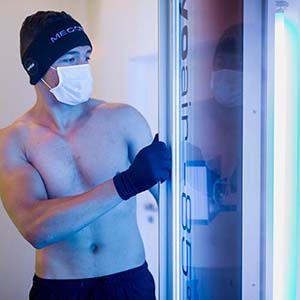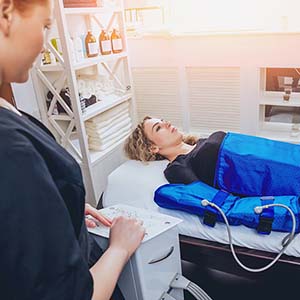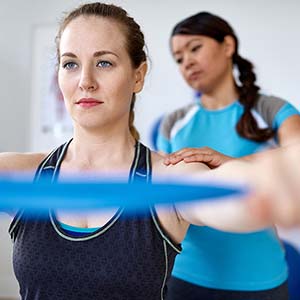Sports Injuries
Sports Injuries
how to recover from a Sports injury
BUT how to recover as fast as possible.
Leading planned recovery from Sports Injuries
- Not engaging in regular exercise
- Not preparing properly for exercise
- Playing contact sports
Types of sports injuries
The symptoms and aftereffects of various sports injuries vary. The most frequent types of sports injuries include:
- Sprains. When the ligaments are stretched too far or ruptured, a sprain occurs. Ligaments are connective tissue strands that keep two bones from moving apart in a joint.
- Strains. When muscles or tendons are overextended or damaged, a sprain occurs. Tendons are thick, fibrous strands of tissue that join bone to muscle. Sprains and strains are frequently confused. Here is how you can tell them apart. Knee injury.
- Knee injury. A sports injury is one that limits the range of motion in the knee joint. The knee injury could be caused by anything from overstretching to a muscle or tissue tear.
- Swollen Muscles. A natural response to an injury is swelling. In addition to being swollen, muscles can hurt and be weak.
- A ruptured Achilles Tendon. The Achilles tendon is a powerful, thin tendon located in the back of your ankle. When participating in sports, this tendon may rupture or break. If this happens, you could experience severe agony and have problems moving.
- Fractures. Bone fractures are sometimes known as broken bones.
- Dislocations. A sports injury could cause one of your bones to dislocate. When that happens, a bone is wrenched from its socket. This may cause swelling and weakness, which can be uncomfortable.
- Rotator cuff injury. Four separate muscles combined make up the rotator cuff. The rotator cuff makes it possible for your shoulder to move in any direction. One of these muscles tearing can weaken the rotator cuff.
Treatment
RICE, which stands for Rest, Ice, Compression, and Elevation, is the acronym that must be used to treat an acute soft tissue injury. Early RICE therapy aims to reduce the first inflammation and start the healing process as soon as possible.
An injury will initially cause pain, accompanied by swelling, redness, and warmth. Icing can help with this, and compression with a soft bandage can aid to minimise swelling. Elevating the injured area is essential even in the first 48 to 72 hours after an accident because it reduces oedema brought on by gravity.
RICE therapy is improved by Pure Medical’s injury recovery therapies, however, if you are unable to attend a Pure Medical Clinic, attempt these at-home measures instead:
- Step 1, REST – When you get hurt, stop what you’re doing right away, and for the first two days, try to get as much rest as you can. Avoid putting any weight on the injured area for 24 to 48 hours. Additionally, resting will prevent future bruises.
- Step 2, ICE – For the first 24 to 48 hours after an injury, apply an ice injury pack or a freezer ice pack covered with a tea towel, do this for 15 to 20 minutes every 2 to 3 hours. Swelling and discomfort can both be effectively reduced by the cold. If you don’t have an ice pack, a bag of frozen peas or corn will also help.
- Step 3, Compression – To help reduce swelling, bandage the affected area with a medical bandage. While the wrapping should be snug, it shouldn’t be so tight that it restricts blood flow. Loosen the bandage if the skin underneath turns blue or becomes cold, numb, or tingly.
- Step 4, Elevation – Elevate the damaged body portion above your heart level. This lessens throbbing, aching, and swelling. Elevation can be achieved by using a pillow. The affected region should be kept elevated whenever possible.
Minor sports injuries can be effectively treated with this line of action. For optimal results, follow the RICE protocol within the first 24 to 36 hours after the accident. It can help reduce swelling and prevent additional pain and bruising in the early stages of a sports injury. Here, a rehabilitation timeline and RICE recommendations are given.
Both over-the-counter and prescription medications can be used to treat sports-related injuries. Most of them lessen pain and swelling.
If your sports injury is painful or appears severe, make an appointment with a doctor. Seek immediate medical assistance if any of the following symptoms are present in the injured joint.
- Extreme pain and swelling
- Observable lumps, ridges, or other abnormalities
- The joint may make popping or crunching noises when you use it
- A joint’s weak or has the inability to the support weight
- Instability
Additionally, if you have any of the following symptoms following an injury, call for emergency assistance:
- Having trouble breathing
- Dizziness
- Fever
Serious sports injuries may necessitate both surgery and physical therapy. If the wound doesn’t heal after two weeks, schedule a visit with your doctor.
Prevention of Sports Injuries
Stretching and warming up properly is the best way to prevent a sports injury. Overstretching and ripping is more likely to occur in cold muscles. Warm muscles can bend more easily. Since they can absorb quick movements, bends, and jerks, injury is less likely.
Additionally, take the following steps to avoid sports injuries:
Use the proper technique
For your sport or activity, learn the appropriate movement patterns. For diverse forms of exercise, multiple stances and postures are required. For instance, in certain sports, the right knee bend can help you avoid getting a spine or hip injury.
Use the appropriate equipment
Wear the appropriate footwear. Ensure you are wearing the appropriate athletic protection. Your risk of injury can increase if your shoes or equipment don’t fit properly.
Don’t overexert
If you do get injured, wait until you’re well enough to resume the activity. Try not to “work through” the discomfort.
After giving your body time to heal, you might need to ease back into the exercise or sport rather than returning with the same level of intensity.
Cool down
After your activities, don’t forget to cool down. Typically, this entails performing the same stretches and workouts involved in a warmup.
Resume physical Activity slowly
Avoid the temptation to ignore your injury for too long. Overly resting may prevent healing. Heat therapy can be used to ease tense muscles after the initial 48 hours of RICE. Resuming your preferred sport or kind of exercise gradually will help.
Diagnosis
Many sports-related injuries cause severe pain or discomfort right away. Others, like overuse injuries, may not show symptoms for several years. These types of injuries are typically found during regular physicals or checkups.
The following stages will likely be used by your doctor to make a diagnosis if you believe you have sustained a sports injury. These consist of:
- Physical examination. The injured joint or body component may be moved by your doctor. They can use this to see how the area is moving—or, if necessary, how it isn’t moving—and how.
- Medical history. Inquiries concerning how you were hurt, what you were doing, what you’ve done after the injury, and other topics are covered in this. They might also want a more detailed medical history if this is their first time seeing this particular doctor.
- Imaging tests. Your doctor and other healthcare professionals can look inside your body with the aid of X-rays, MRIs, CT scans, and ultrasounds. This supports their ability to diagnose a sports injury.
Your doctor could advise you to use the RICE approach if they believe you have a sprain or strain.
Observe your symptoms and adhere to these suggestions. If they worsen, you might have a more severe sports injury.
Risks
Children
Age
Lack of Care
Weight
Your hips, knees, and ankles may experience unneeded strain if you carry about extra weight. Exercise and sports increase the pressure. You are now at an increased risk for sports injuries.
Getting a physical checkup from a doctor before starting sports might be beneficial for children or adults.
When to call a doctor
If you see any swelling or it hurts when you put weight on the injured area, contact your doctor immediately. Seek medical assistance if the issue is in the area of a previous injury.
If, after 24 to 36 hours of RICE, you don’t notice any improvement, contact a healthcare professional.
The skeleton of a youngster isn’t entirely formed, hence the bones are weaker than those of an adult. If your child suffers a sporting injury, take great care. What appears to be a tissue injury could actually be a more severe fracture.
Pay attention to your symptoms. Keep in mind that the sooner you receive a diagnosis and treatment, the sooner you’ll recover and return to playing your sport.







